We evolved to stand upright.
But with the posture a lot of people have these days, you might not believe it.
We spend so many hours hunched over a computer screen and slumped on a couch that we develop what I call…
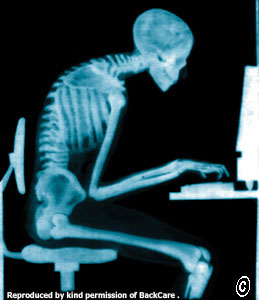
Really its Janda’s Upper Crossed Syndrome and Lower Crossed Syndrome:
The result is the really, really poor posture that it seems everyone has these days.
Why you should care:
- You look like Quasimodo…..
- If you fix this you’ll FEEL a million times better.
- Most of the aches and pains you have will “magically” disappear.
- Headaches will disappear.
- You’ll MOVE a million times better.
- LIFE will be EASIER and BETTER.
Ummm, a Better Life…that should be reason enough.
I know, you’re like Bullsh@t….that stuff won’t make my life better and you’re right if; you choose to live the life of a slug…yeah, then it doesn’t matter, more World of Warcraft, ohh wait, Kim and Courtney come back on tonight….
Good news is; you can reverse this. By no means does this have to be permanent.
That said it, it’s gonna take work.
It took thousands of hours for this to be your “normal” it’s going to take more than 10 minutes a day twice a week to reverse this.
Here are some easy exercises you can do EVERYDAY that will help reverse these postures.
Yeah, I know,…. everyday, that sucks, but ya know what? It’s probably worth the 10-15 minute investment of your time to not walk around like your 80-year-old grandmother…
Cat Camel Stretch:
Regain some extension that’s been lost in the ribcage (thoracic spine).
This is a theme, we all can use some more thoracic spine mobility…extension and rotation.
Focus on movement through the ribs and scapula, NOT the low back.
- Push the scapula away at the top
- Pull them together and pull the chest (NOT CHIN) up at the bottom
- Think “logo” or “nipples” up at the bottom
- Belly button points at the floor the whole time
Thoracic Extensions:
Another drill to regain some of the mobility the ribs (thoracic spine) have lost.
- Elbows together in the front…get those scapula pulled to the sides out-of-the-way
- Extend through the ribs, not the low back
- Relax
Thoracic Rotations:
These will increase your thoracic (ribcage) mobility a little more, especially in rotation.
- Chest up the whole time
- Rotate, don’t lean back through the movement.
- Don’t just swing the arm, get the chest up, try to point the logo on the chest at the wall.
Lacrosse Ball on Pecs:
Soften the “hot spots” in the pec major and pec minor loosening the muscles and regaining some extensibility in the tissues.
This will probably hurt…maybe a lot.
- Put the arm behind the back to “open” the chest and get into all the corners
Chest Stretch:
If I need to tell you how to do this, you’re struggling…struggling bad, you need other kinds of “help“.
Hip Flexor Stretch:
Chances are your Psoas and other hip flexors are jacked up…un-jack them.
- Sit tall, chest up but don’t extend the ribs. Think “ribs down”
- Front foot flat and weight in the front heel
- Squeeze the glute of the back leg hard
- Push the hip of the back leg forward
If it feels like the muscle is going to “tear off the bone” at the hip, you’ve got it.
Chin Tuck:
Strengthening the neck extenders will help pull the head back over the shoulders.
- Push straight back, not up
- Hold the back position for 1-5 seconds
- Sit tall, chest up….start in proper perfect “tall” alignment and stay that way
Band Neck Extensions:
This also helps to strengthen the muscles that pull the head back.
This is a little awkward the first time, stick with it and you’ll find the sweet spot….
- Place a band behind the neck and look up.
- Don’t jerk, be smooth and deliberate.
- Make sure you have enough tension on the band that it doesn’t move.
Pull Apart:
Strengthening the scapula stabilizers and retractors will help pull the scapula (shoulder blades) back and “open the chest back up”.
- Shoulders down
- Arms straight
- Pinch the shoulder blades together
Lat PullDown:
Not only do desk jockeys need scapular retraction (pinching) they need to get those things pulled down (depression).
- Think “shoulder blades in the back pocket”
Plank:
Basically, this does everything. Scapular stability, thoracic extension (don’t round over), core bracing, hip (butt) activation.
But don’t just hang out there with a saggy midsection, or your head on the ground.
- Head in line with the spine, chin back
- Chest up, don’t round over..think “get tall”
- Flat, ears through ankles line
- Hips rolled under slightly
- Butt tight…squeeze like you mean it
Glute Bridge With Band:
Press through the hips and keep the knees out over the toes…
If you’re butt cramps, you’re doing it right...
- Knees out
- Pressure in the heels (but feet flat)
- Squeeze the butt hard and drive the hips up until locked out
- Keep the “ribs down”...don’t “arch” the low back, DRIVE the hips…
Knee Outs With Band:
A lot of desk jockeys walk and stand with feet like this:
Their ass isn’t working as an external rotator so the body finds a way fire the glutes and stabilize the hip by turning (externally rotating) the feet out.
- Hips fully extended and locked in place
- Drive the knees out
- Don’t let the hips fall as you push out, squeeze hard and keep them up.
X-Band Walk:
This exercise is basically a cure-all:
- Scapula depression
- Scapula retraction
- Glute Medius work
Don’t start with too much tension, feet at hip width and they NEVER get any closer. You shouldn’t have to hike the hip or wiggle the foot.
This exercise is best when it’s “smooth”….a smooth small step is better than a big “clunky” step.
- Hands on the hip bones- keep them there
- “Pinch” the elbows back, try to touch them together in the back (I know, this won’t happen…but try)
- Keep the belt line flat, no hiking
- Feet straight, and knees out over toes
- “Glide” across the floor
- Each step should be with a flat foot, not on the heels or toes
A consistent diet of these should help mitigate and if done regularly reverse Desk Jockey syndrome and get you back in alignment.
Don’t think this is an invitation to not train…on the contrary.
These exercises are merely little rocks and grains of sand in the big picture…

They are supplemental or warm-up/ corrective exercises to do at the office/ before work/ before or after training to fix what ails ya.
Getting the body lined back up will allow you train harder with a much lesser chance of injury in the future.

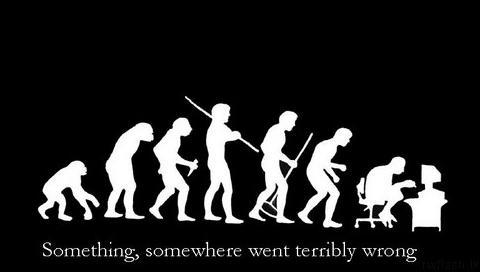
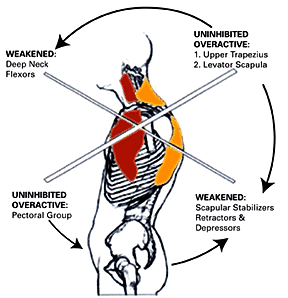
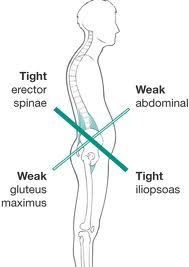
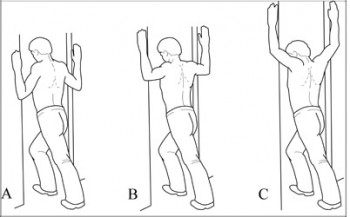
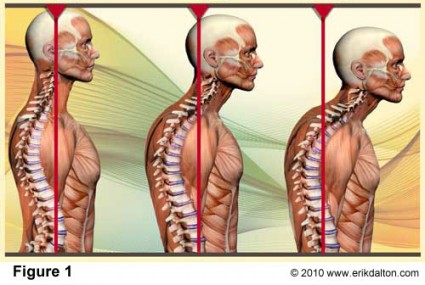
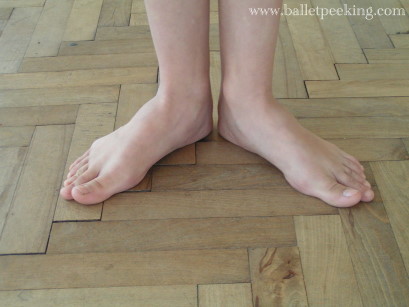


[…] is true is that the Psoas is waaaay more important than we used to think and in a lot of people, especially Desk Jockeys, it’s either not doing its job, it’s tight as hell or […]